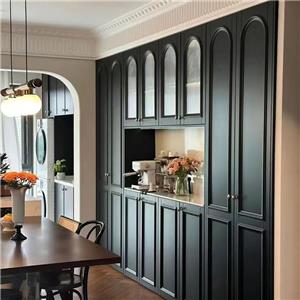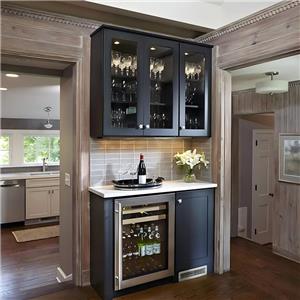Is 4 feet too narrow for a walk-in closet?
As an important design in many people's home life, the walk-in closet provides convenient storage space and a comfortable dressing environment. However, when designing a walk in wardrobe, the width of the space is crucial. A 4-foot-wide walk-in closet is more common in some homes, but there is still controversy as to whether it is spacious enough.
In this article, we will explore the ideal width of a walk in wardrobe from multiple perspectives, analyze whether 4 feet is too narrow, and provide readers with some design suggestions and solutions.
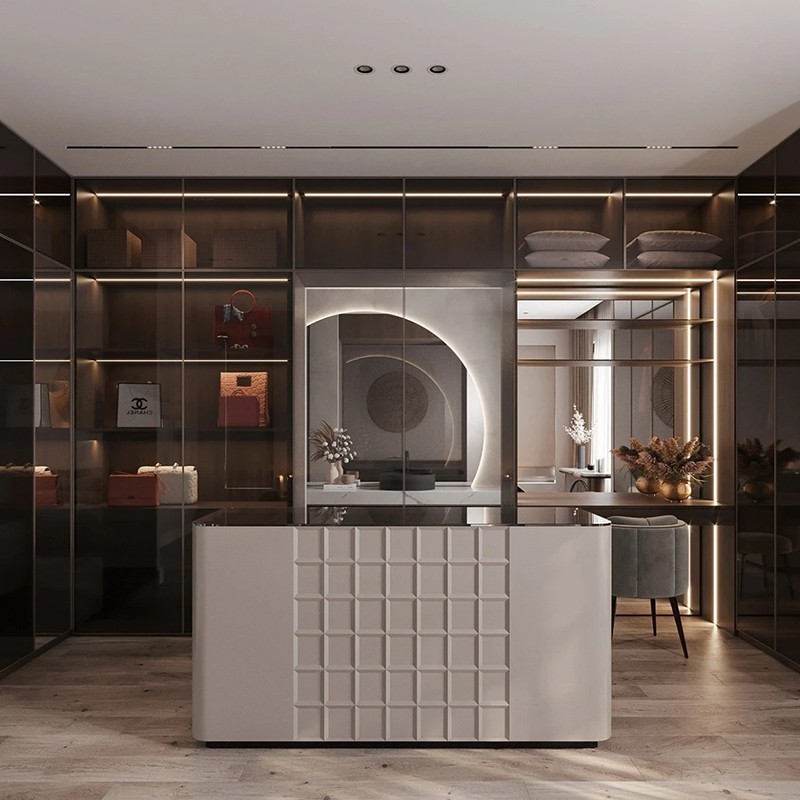
What is the role of a walk-in closet?
The role of a walk in wardrobe is to provide users with a space where they can store clothes, shoes, and accessories, while allowing users to enter it to freely choose, match, and organize clothes. Therefore, it is not only a storage space, but also an area that is highly interactive with daily life. In order to meet such functional requirements, the width of the walk-in closet must be wide enough to ensure that users can walk around comfortably, and the storage systems (such as clothes rails, drawers, and shelves) are reasonably laid out.
A walk-in closet usually consists of several parts:
1. Hanging area: used to hang clothes, usually need to consider the length of clothes and the height of the clothes rod.
2. Storage area: including drawers, shelves and racks, used to store and stack clothes, shoes and accessories.
3. Dressing area: needs enough space for users to walk around and try on clothes.
4. Mirrors and seats: some walk in wardrobes will also install mirrors and seats to facilitate dressing.
These functions require a certain width of the closet space, and whether the width of 4 feet is enough depends on how these functional areas are designed.
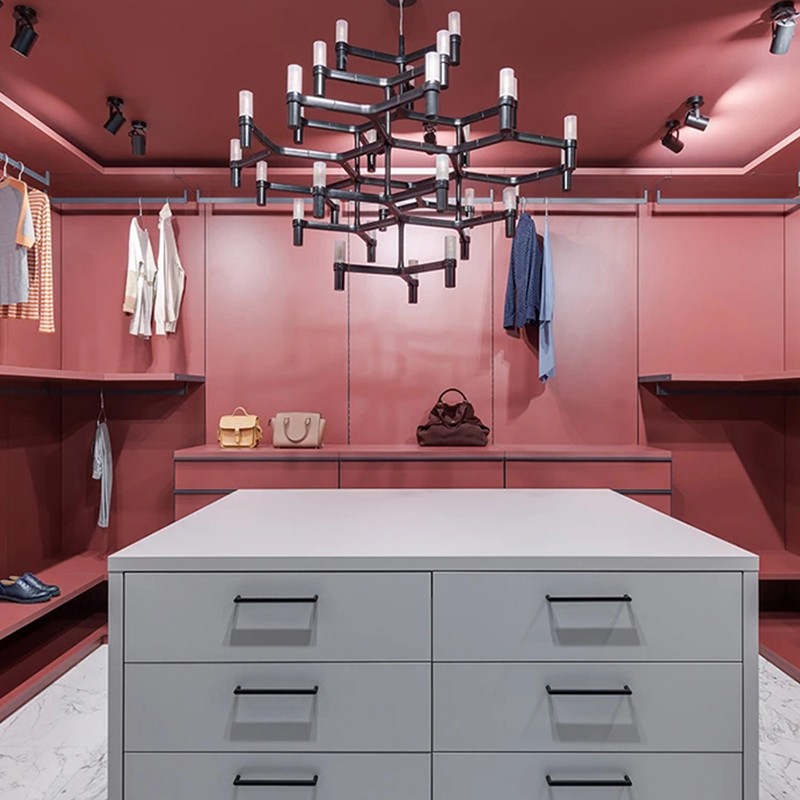
What is the layout of a 4-foot walk-in closet?
The standard walk-in closet width is usually 5 to 6 feet, which can ensure that the clothes rods or shelves are placed on both sides of the closet while leaving space for passage in the middle. However, for a walk-in closet that is only 4 feet wide, how to design the layout properly is the key.
The possibility of a one-sided layout
In a 4-foot wide space, a more realistic option is to adopt a one-sided layout, that is, to arrange all storage modules on one side of the closet. This allows for enough space to move around on the other side. Typically, the depth of a clothes rail is about 24 inches (2 feet), plus the user's space for movement, a single-sided layout can provide users with a passage width of about 2 feet, which basically meets the needs of daily use.
The benefit of this layout is that it makes full use of the space on one side of the wall to ensure the realization of storage functions. However, the disadvantage is that due to the concentration of storage space, the walk in wardrobe may appear crowded, and the visual range is small, and users may need to walk back and forth several times to find the items they need.
Challenges of a two-sided layout
If you try to achieve a two-sided layout in a 4-foot-wide space, that is, set up hanging areas or shelves on both walls, the width of the aisle will be greatly limited. The clothes rails on both sides occupy a total of 48 inches (4 feet) out of 4 feet, which means there is almost no remaining space for people to walk around. Therefore, a two-sided layout is almost impossible in a 4-foot-wide walk-in closet.
Utilization of vertical space
In a 4-foot walk-in closet, although the horizontal space is limited, the vertical space can still be fully utilized. By adding multiple layers of shelves or using upper and lower layers of clothes rails, users can maximize storage capacity. In addition, using adjustable shelves and drawer systems can also flexibly adjust storage space according to needs.
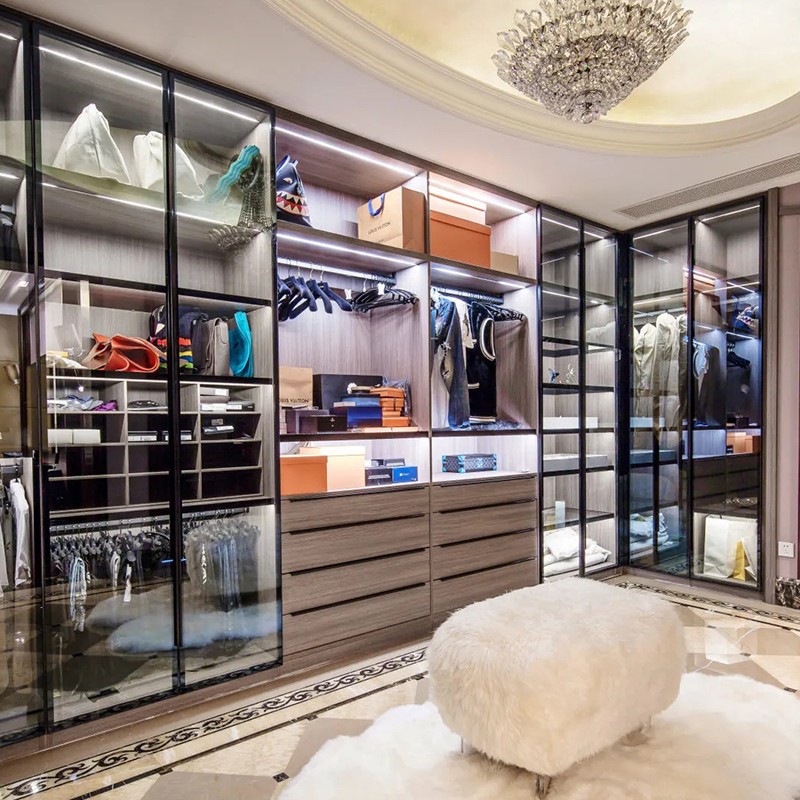
Is 4 feet too narrow for a walk-in closet?
From the user's perspective, the width of a walk-in closet directly affects the daily use experience. Although a 4-foot-wide closet can meet basic storage needs, it may face the following problems in actual operation:
Spatial oppression
Since the design of a walk-in closet itself requires users to move freely and use various storage spaces in it, too narrow aisles will make people feel oppressive. Even if the 4-foot width can accommodate a single-sided storage module, the remaining aisle space is still relatively narrow, especially when users try to take and put clothes and move at the same time, it will appear cramped.
Inconvenient dressing process
An important function of a walk-in closet is to allow users to easily change clothes or match clothes in it. However, in a 4-foot-wide space, it may be difficult for users to make big moves, especially when there are many clothes and they need to try them on repeatedly. Compared with a wider walk in wardrobe, a 4-foot space is less comfortable in actual use.
Lighting and ventilation issues
Narrow spaces not only affect the user's activities, but may also lead to poor lighting and ventilation. Smaller walk in wardrobes are prone to dark corners, and users may feel inconvenienced when choosing clothes due to insufficient light. Therefore, in a 4-foot walk-in closet, reasonable lighting design is essential, and it is recommended to use bright ceiling lights or recessed lamps. In addition, ventilation also needs to be properly considered, and narrow spaces are prone to accumulate moisture, affecting the storage of clothing.
What is the ideal width of a walk-in closet?
Although a 4-foot-wide walk-in closet can achieve basic functions in some cases, an ideal walk-in closet usually requires a more spacious space. Here are some design suggestions and an analysis of walk-in closets of different widths to help users understand how to choose a wardrobe size that suits their family.
5-foot-wide walk-in closet
A width of 5 feet is considered to be the minimum comfortable width for a walk-in closet. It can achieve a double-sided layout, that is, clothes hanging rods or storage racks are placed on both sides, while leaving about 30 to 36 inches of aisle space. Such a design can maximize storage capacity while ensuring user activity space.
6-foot and wider
For those families with enough space, a walk-in closet that is 6 feet or wider is the ideal choice. The spacious space can not only easily achieve a two-sided layout, but also add an additional functional area in the middle, such as a center island or dressing table. A wider walk-in closet can provide a more comfortable use experience and leave more room for future storage needs.
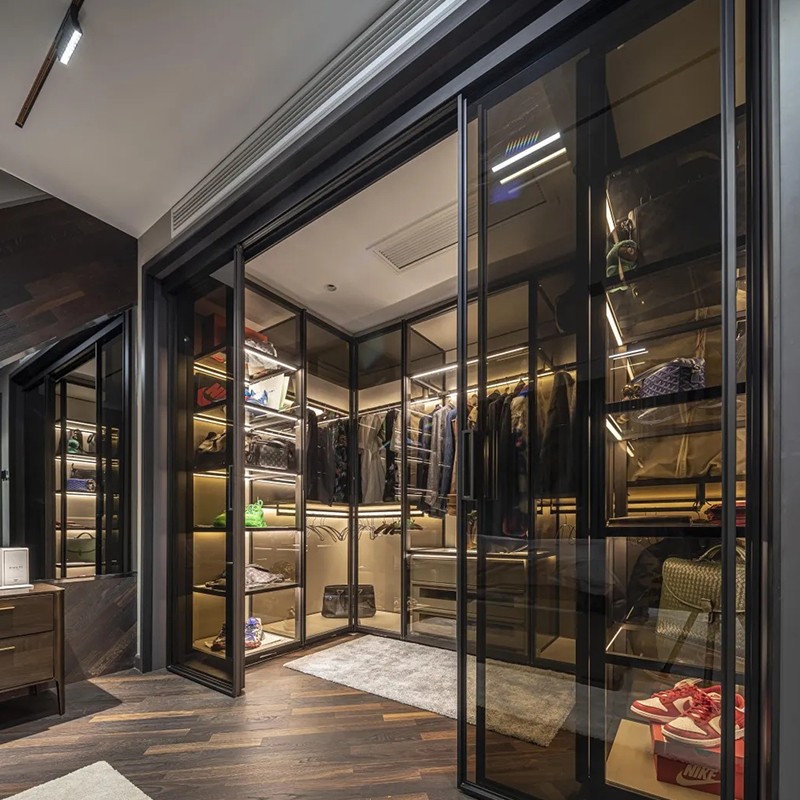
How to optimize the design of a 4-foot walk-in closet?
Although a 4-foot-wide walk-in closet is not as ideal as it should be, users can still optimize the efficiency of this narrow space with a few design tips.
Choose a compact storage system
Within a 4-foot space, it is important to choose a compact and functional storage system. Try to avoid large free-standing furniture and choose built-in shelves and drawers to make full use of every inch of wall space. At the same time, the height of the clothes hanging rod and shelves can be flexibly adjusted to ensure that the storage space matches the type of clothing.
Use sliding or folding doors
Traditional opening and closing doors will take up valuable activity space in a narrow space. It is recommended to use sliding or folding doors in a 4-foot walk-in closet. This not only saves space, but also reduces obstacles for users to move around in front of the closet, improving ease of use.
Clever use of mirrors
In narrow spaces, mirrors can help enlarge the visual space. In a 4-foot walk-in closet, it is recommended to install a large mirror, or embed the mirror on the door or wall to increase the sense of space. At the same time, the mirror can also facilitate dressing.
Reasonable lighting design
Since the 4-foot-wide closet space is relatively small, lighting design is particularly important. It is recommended to use recessed lamps or LED light strips to avoid traditional chandeliers taking up too much head space. In addition, sensor lights can be installed on the shelves or drawer areas to ensure that each storage area has enough light to facilitate users to take and put clothes.


